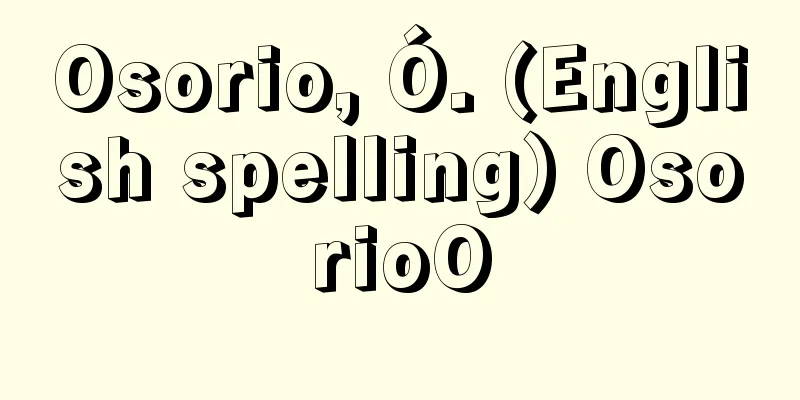Natural history

|
In a broad sense, it is a science that studies the types, properties, distribution, and ecology of natural objects such as animals, plants, and minerals. In a narrow sense, it is a general term for zoology, botany, mineralogy, and geology. Synonyms include natural history and natural history. In modern times, each field of science related to natural objects has become highly specialized and developed, so the term natural history is rarely used as a general term. Research into the use of natural materials such as animals, plants, and minerals for medicinal purposes, which are deeply related to human life, has existed in China since ancient times, and it first became a science known as pharmacognosy with the publication of works such as "Shennong's Materia Medica" and "Hakubutsu" around the 5th century. It is thought that this Chinese pharmacognosy was introduced to Japan in the form of "Shinshu Honzo" around the 8th century. After that, there was no development of academic studies in general, as both China and Japan were in a period of war. In the early 17th century, the Tokugawa Shogunate was established, and the arts and sciences began to flourish. Tokugawa Ieyasu himself also had a deep interest in pharmacognosy, and as a result, doctors began to study and record animals and plants for medicinal purposes. Furthermore, the "Honmao Gangmoku" written by the Chinese Li Shizhen was introduced to Japan in 1590, and had a great influence on pharmacognosy scholars of the time, such as Kaibara Ekiken, Ono Ranzan, and Inou Jakusui. Among them, Kaibara Ekiken published books such as "Yamato Honzo," "Kafu," and "Shosaifu," and worked to enlighten and popularize herbal medicine and natural history. In this way, it is thought that Japanese herbal medicine matured and developed by the time of the Edo period, and took on the form of natural history. Also in the middle of the Edo period, the Swedish naturalist Peter Thunberg came to Japan (1775). He had studied under the Swedish scholar Linnaeus, who established the taxonomy of plants and animals that forms the basis of natural history, and during his several years in Japan he acquired a large number of plant and animal specimens, upon which he returned to Japan and compiled works such as "Flora Japonica" (1784) and "Fauna Japonica" (1822-1823). At the same time in Japan, in the field of Dutch studies, Sugita Genpaku and others completed "Kaitai Shinsho" (1774), and a new approach was born that introduced European scientific methods to Japanese natural history, which had previously been based on botany and other practical applications. Since Aristotle in Greece, natural history in Europe has been a system of science that studies natural objects such as animals, plants, and minerals. The "anatomical drawings" by Leonardo da Vinci of Italy and the observation records of microorganisms by Leeuwenhoek of the Netherlands using a homemade microscope show a passion for the pursuit of truth that goes beyond practical use. Natural history as a theoretical study was established in the 17th century with the discovery of the principle of blood circulation by Harvey of England and the discovery of the Malpighian tubules by Malpighi of Italy. After the 18th century, with the appearance of works such as Goethe's "Metamorphosis of Plants," Lamarck's "Philosophy of Animals" in France, and Charles Darwin's "On the Origin of Species," natural history became based on the idea of biological evolution, and led the way to modern biology. Modern biology has been subdivided into many fields, and there is a tendency to move away from the exploration of biological evolution as its essence. Although botany, which was a practical science, has developed into natural history as a science, we must avoid returning to a life science that is purely practical. As the word "natural history" indicates, natural history is an important branch of biology that studies and records the life of natural objects in nature. [Kunii Yoshiaki] "History of Japanese Natural History" by Ueno Masuzo (1973, Heibonsha)" ▽ "Short Stories on Natural History, Volumes 1 and 2, by Ono Ranzan and others, with commentary by Ueno Masuzo (1982, Kowa Publishing)" [Reference] |Volume 4, written by Su Jing and others, manuscript held at the National Diet Library "New Revised Herbal Medicine" Volume 1, Part 1, Written by Lee Si-chin, Published in 1637 (Kan'ei 14), held at the National Diet Library "Compendium of Materia Medica" Written by Krums, translated by Sugita Genpaku, Maeno Ryotaku, Nakagawa Junan, and Katsuragawa Hoshu, illustrated by Odano Naotake, published in 1774 (An'ei 3), held at the National Diet Library . "Anatomy New Book" Source: Shogakukan Encyclopedia Nipponica About Encyclopedia Nipponica Information | Legend |
|
広義には動物・植物・鉱物などの自然物の種類・性質・分布・生態などを研究する学問。狭義には動物学、植物学、鉱物学、地質学の総称。同義語に博物誌、自然誌などがある。現代では自然物に関する各分野の科学が高度に分化、発展しているため、総称としての博物学という語が使われることはほとんどない。 人間の生活と深いかかわりをもつ動植物、鉱物などの自然物を薬用に用いる研究は古くから中国にあり、5世紀ごろに『神農本草経(しんのうほんぞうきょう)』『博物志』などの著作が出るに及んで本草学として初めて学問となった。この中国の本草学が『新修本草』として日本に入ってきたのは8世紀ごろと考えられる。その後、中国も日本も戦乱の時代が続いたため、学問一般の発展はみられなかった。17世紀初めに至り、徳川幕府が成立し、学芸が隆盛し始め、徳川家康自身も本草学に深い関心をもっていたことなどから、医師たちの間で薬用としての動植物の研究、記録が進められた。さらに中国の李時珍(りじちん)が著した『本草綱目』が日本に渡来し(1590)、当時の本草学者、貝原益軒、小野蘭山(らんざん)、稲生若水(いのうじゃくすい)らは大きな影響を受けた。なかでも貝原益軒は『大和(やまと)本草』をはじめ『花譜』『諸菜譜』などの書物を刊行し、本草、博物学の啓蒙(けいもう)普及に努めた。このように江戸時代に至って日本の本草学は成熟発展し、また博物学としての形を整えたと考えられる。 また江戸時代の中期、スウェーデンの博物学者ツンベルクが来日した(1775)。彼は、博物学の基礎となる動植物の分類学をおこしたスウェーデンの学者リンネに学んだ人物で、日本滞在の数年間に、動植物の標本など多数を得て帰国、『日本植物誌』(1784)、『日本動物誌』(1822~1823)などをまとめた。時を同じくして、日本でも蘭学の方面で、杉田玄白らの『解体新書』の完成(1774)があり、従来の実用を主とした本草学を基盤とした日本の博物学に対して、ヨーロッパの科学の方法を導入したものが生まれてきた。 ヨーロッパにおける博物学は、ギリシアのアリストテレス以来、動植物、鉱物など自然物についての研究がなされ、科学としての体系を形成してきた。イタリアのレオナルド・ダ・ビンチによる「解剖図」や、オランダのレーウェンフックの自家製の顕微鏡による微生物の観察記録などには、実用にとらわれない真理探究の情熱がうかがわれる。イギリスのハーベーの血液循環の原理発見や、イタリアのマルピーギのマルピーギ管の発見などがあり、学理研究としての博物学が17世紀に確立されていった。18世紀以後、ドイツのゲーテの『植物変態論』はじめ、フランスのラマルクの『動物哲学』、イギリスのC・ダーウィンの『種の起原』などが現れるに及んで、生物進化の思想を基本とした博物学となり、現代生物学への道を進むのである。 現代生物学は多くの分野に細分化され、その本質としての生物進化の探究から離れる傾向がなきにしもあらずである。実用の学問であった本草学が、科学としての博物学に発展したにもかかわらず、ふたたび実用のみのライフ・サイエンスにゆくようなことは避けなければならない。博物学は、「自然誌」ということばが示すように、あくまで自然のなかでの自然物の生活を研究し、記録する生物学の重要な分野である。 [國井嘉章] 『上野益三著『日本博物学史』(1973・平凡社)』▽『小野蘭山他著、上野益三解説『博物学短篇集』上下(1982・恒和出版)』 [参照項目] |巻4 蘇敬等撰 写本国立国会図書館所蔵"> 『新修本草』 第1巻 上 李時珍撰 1637年(寛永14)刊国立国会図書館所蔵"> 『本草綱目』 クルムス著 杉田玄白・前野良沢・中川淳庵・桂川甫周訳 小田野直武画 1774年(安永3)刊国立国会図書館所蔵"> 『解体新書』 出典 小学館 日本大百科全書(ニッポニカ)日本大百科全書(ニッポニカ)について 情報 | 凡例 |
<<: Museum - Hakubutsukan (English spelling) museum
Recommend
Kabarda
...A general term for the three ethnic groups of ...
Gee-Thaysen disease
…In 1888, SJ Gee of England and TEHTaysen of Engl...
Pullorum disease
A disease of day-old chickens infected with Salmon...
Mount Kabuto
A district in the central eastern part of Hiroshim...
Boat burial - Shuso (English spelling)
A custom in which the body is placed in a small bo...
Polygonum japonicum (English spelling) Polygonumjaponicum
…[Kazumi Tsuchiya]. . … *Some of the terminology ...
Couperin, L.
…French composer, organist and violinist. The mos...
Bismuth monosulfide - bismuth monosulfide
...There are three known compounds of bismuth and...
Coffee - Coffee (English spelling)
A beverage made from the seeds of the coffee plan...
Pascal, É. (English spelling) PascalE
…French scientist, religious thinker, and man of ...
《H₂O》 - Ecchi 2O
...All film works, techniques, forms, movements, ...
Caraway - Caraway (English spelling)
A biennial plant of the Apiaceae family (APG clas...
《Cosmology》 - Spaceman
…German mathematician and assomologist. His real ...
El Bae - El Bae
… [Nature, Geography] Its area is about three tim...
Kamkov, BD (English spelling) KamkovBD
...From December 3 to 11 (November 20 to 28 in th...








![Oe [town] - Oe](/upload/images/67cb13d2d0f84.webp)
